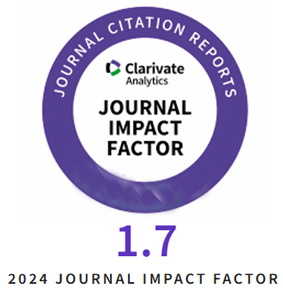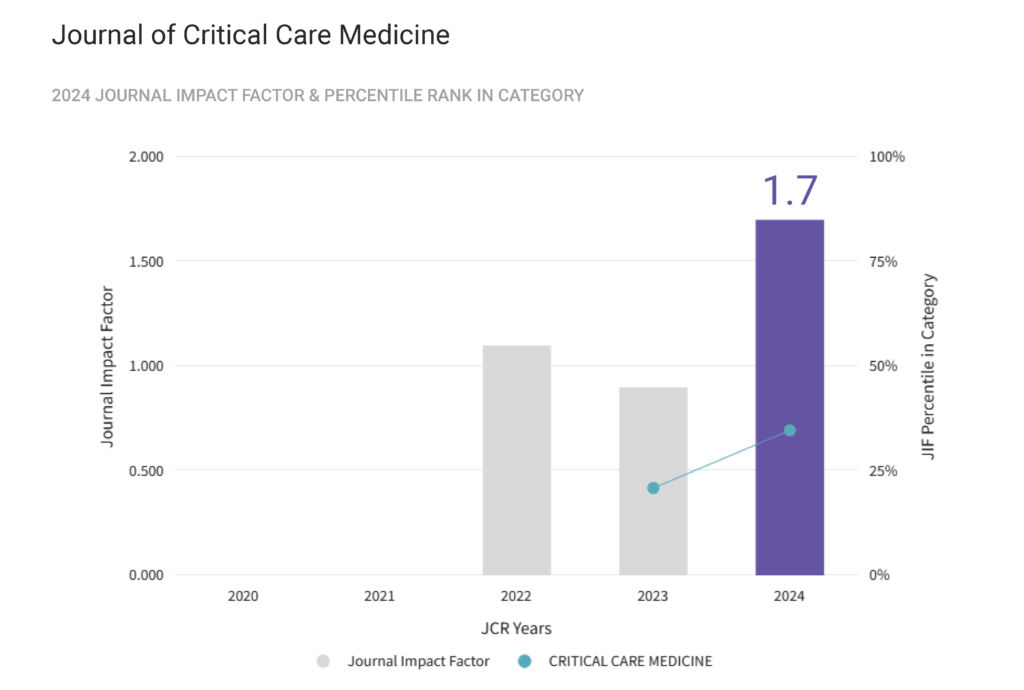Introduction: Andexanet alfa shows excellent hemostatic efficacy in treating intracranial hemorrhage (ICH) during Xa inhibitor therapy. However, its optimal use remains uncertain.
Aim of the study: This study aims to evaluate our clinical experience in managing Xa inhibitor-related ICH to clarify its appropriate application.
Material and methods: This study was conducted as an observational, non-interventional study. We observed 63 cases of ICH in patients receiving anticoagulation therapy with apixaban, rivaroxaban, or edoxaban. After excluding 14 patients due to fatal outcomes or complete hemostasis, 49 patients were eligible for andexanet alfa administration.
Results: The mean age and hematoma volume was 78 years and the 35ml, respectively. Based on patient characteristics and severity, andexanet alfa was administered to 23 patients, while 26 patients received usual care. Hemorrhage enlargement was absent in 22 cases (92.8%) in the andexanet group and in 22 cases (84.6%) in the usual care group. Hemorrhage expansion occurred in three cases from the usual care group, one patient undergoing emergency surgery and another died from uncontrollable intraoperative bleeding. Two patients (8.7%) in the andexanet group experienced thromboembolic events as adverse reactions. At 3 months, the modified Rankin Scale (mRS) was 3 or lower in 39% of the andexanet group and 50% of the standard care group.
Conclusions: Although patient selection bias make it difficult to draw definitive conclusions, we recommend considering andexanet alfa administration for cases within several hours of the last Xa inhibitor dose to prevent neurological deterioration. Emergency surgical cases should also be eligible for andexanet alfa to ensure intraoperative safety. Further research is required to determine clinically appropriate indications for its use.
Category Archives: Original Research
Pharmacokinetic-guided magnesium prophylaxis in cardiac surgery: A randomized trial demonstrating guideline-level reductions in atrial fibrillation, accelerated recovery, and systemic cost savings
Objective: To evaluate the efficacy, safety, and cost-effectiveness of a perioperative magnesium (Mg) sulfate protocol in reducing postoperative atrial fibrillation (AF) incidence and ICU resource strain following cardiac surgery.
Methods: Design: Double-blind, single-center randomized controlled trial (RCT). Setting: Tertiary-care academic hospital. Participants: 130 adults undergoing elective cardiac surgery, randomized to Mg sulfate (n=65) or placebo (n=65). Interventions: The Mg group received a pharmacokinetic-guided regimen: 2 g intravenous bolus post-cardiopulmonary bypass, followed by 1 g/h infusion for 5 hours, then 200 mg/h for 19 hours, and oral supplementation (I g every 8 hours) for one week post-discharge. The placebo group received equivalent saline infusions and oral placebo.
Results: Primary outcome: AF incidence was 18.5% in the Mg group vs. 41.5% in placebo (unadjusted RR=0.45, 95% CI: 0.25–0.81; p=0.007). Secondary outcomes: Mg shortened ICU stay by 1.4 days (p<0.001), reduced mechanical ventilation duration by 3.2 hours (p<0.001), and demonstrated comparable safety profiles for hypotension and renal impairment. Subgroup analysis: CABG patients showed 65% risk reduction (OR=0.35, p=0.01). Cost-effectiveness: ICU stay reduction projected $3,500 savings per patient.
Conclusions: Perioperative Mg sulfate significantly reduces AF incidence, accelerates recovery, and lowers healthcare costs, supporting its integration into standardized postoperative protocols. This trial provides Level I evidence for Mg as a guideline-recommended intervention. These findings are promising and support the integration of Mg into standardized postoperative protocols; however, they require confirmation in larger, multicenter studies.
Epidemiological insights into carbapenem resistant infections in critical care settings: A molecular and clinical investigation
Objective: This study aimed to investigate the prevalence and genetic relatedness of multidrug-resistant Gram-negative bacilli, particularly those resistant to carbapenems, in patients admitted to intensive care units. It also sought to explore associations between bacterial colonization or infection and clinical outcomes, including comorbidities, treatment regimens, and mortality.
Methods: Between November 2022 and December 2023, screening and pathological samples were collected from patients at a tertiary hospital. Screening samples included rectal and pharyngeal swabs, while pathological samples comprised respiratory tract secretions. Bacterial identification and antibiotic susceptibility testing were performed using standard microbiological methods. Genetic similarity among isolates was assessed using a molecular fingerprinting technique to detect potential clonal spread.
Results: A total of 62 carbapenem-resistant strains were identified, with Acinetobacter baumannii and Klebsiella pneumoniae being the most prevalent. Pathological isolates exhibited higher resistance levels than screening isolates. Most patients had multiple comorbidities, with cardiac, renal, and pulmonary conditions being the most common. A significant association was found between prolonged intensive care unit stay and increased mortality. However, no significant correlation was observed between the number of comorbidities or antibiotic classes used and mortality. Molecular analysis revealed clonal clusters of Acinetobacter and Klebsiella strains, suggesting nosocomial transmission.
Conclusions: The findings underscore the importance of early screening, molecular surveillance, and stringent infection control measures in intensive care settings.
Incidence rate of post-intensive care syndrome-family in Japan: A post-hoc analysis of a prospective observational study
Background: Family members in intensive care units (ICUs) may develop post-intensive care syndrome-family (PICS-F), characterized by psychiatric disorders such as anxiety, depression, and post-traumatic stress disorders (PTSD). A previous study reported that approximately 13% of patient families in Japan develop PICS-F symptoms six months following ICU discharge, which is lower compared to other countries. However, this figure may be underestimated by administrative claims data in Japan. Although clinical guidelines recommend interventions to prevent PICS-F, the implementation rate of these interventions in Japan remains unclear. This study addresses the epidemiology of PICS-F among family members of ICU survivors and the implementation of interventions for preventing PICS-F in Japan.
Methods: A post-hoc analysis of a prospective multicenter cohort study was conducted, focusing on mechanically ventilated ICU survivors and their closest relatives. This study covered 16 ICUs in 14 hospitals between April 2019 and September 2020, using questionnaires to assess the PICS-F symptoms among relatives using the Hospital Anxiety (HADS-A) and Depression (HADS-D) Scale and the Impact of Event Scale-Revised (IES-R). The implementation rate of interventions to prevent PICS-F was also evaluated.
Results: Of the 151 surveyed relatives, 104 relatives were assessed after 6 months. Notably, PICS-F was identified among 45.2% of relatives, with depression (36.5%), anxiety (31.7%), and PTSD (24.0%). Relatives with PICS-F were less likely to maintain their original employment compared to those without (61.3% vs 85.3%, P=0.047). While 63.5% of relatives received at least one preventive intervention during the ICU stay, more than one-third received none.
Conclusions: The incidence of PICS-F in Japan is higher than previously reported, affecting nearly half of patient relatives. Moreover, the implementation rate of interventions to prevent PICS-F is low. These findings suggest the need for reinforced socioeconomic support.
Complication patterns and postoperative outcomes in surgical patients admitted to intensive care units
Objective: To analyze the frequency and types of postoperative complications and risk factors for in-hospital mortality.
Methods: This retrospective longitudinal study included adult patients who underwent surgical procedures and were admitted to the intensive care unit of a university hospital between March and July 2022. Study variables included sociodemographic, clinical, and epidemiological data; postoperative complications and hospital outcomes. The significance level was set at 5%.
Results: We analyzed 202 patients, with a median age of 67 years (IQR 55–74) and a predominance of males (62.4%). Inhospital mortality was 26.2%. Postoperative complications occurred in 84.7% of patients, with cardiovascular (53.4%), infectious (49.5%), and gastrointestinal (48.5%) complications being the most frequent. Early postoperative feeding was initiated in 34.2% of cases, and a delay was associated with a higher risk of complications. Nausea and vomiting prophylaxis were administered to most patients—intraoperatively in 61.9% and postoperatively in 96%. In logistic regression analysis, female sex, urgent surgery, and higher SAPS 3 scores were identified as independent risk factors for death.
Conclusions: Postoperative complications were highly prevalent and associated with an increased risk of death. Intraoperative nausea and vomiting prophylaxis and early postoperative feeding were associated with a lower frequency of complications. Identified risk factors for mortality included female sex, higher SAPS 3 scores, and urgent surgeries.
Evaluation of PRVC and SIMV ventilation techniques on hemodynamic metrics and arterial blood gases in ICU patients with multiple trauma: A randomized, triple-blind study
Background: In the Intensive Care Unit (ICU), mechanical ventilation is frequently employed to assist critically injured patients with breathing. The two conventional methods are SIMV and PRVC. This research sought to evaluate these techniques, particularly concerning patient stability and the preservation of optimal blood gas levels.
Methods: We carried out a parallel-group, randomized, triple-blind clinical trial. One hundred two patients with multiple traumas admitted to the ICU were randomly allocated to either the SIMV group or the PRVC mode group. The main outcome was measured through blood hemodynamic parameters, blood pressure, and heart rate in mechanically ventilated patients with multiple traumas. The secondary outcome measured was the composition of arterial blood gases (pH, PaCO2, PaO2, HCO3, and SpO2).
Result: The average age in the SIMV and PRVC groups was 38.53±16.29 and 38.04±15.26 years, respectively, showing no statistical significance. Arterial blood gas parameters, including arterial blood pH, PaCO2, PaO2, HCO3, and SpO2, were similar in the SIMV and PRVC groups at the beginning of admission and 8 and 12 hours after admission, and there was no significant difference. Comparing vital signs including blood pressure (systolic, diastolic, and mean arterial pressure) and heart rate was similar in the SIMV and PRVC groups at the beginning of admission and 8 and 12 hours after admission.
Conclusion: No significant justification was identified to favor one approach over the other for trauma patients receiving ventilatory support. Both groups stayed consistent regarding vital signs and other health indicators.
Nurses’ attitudes and knowledge about organ donation and transplantation in closed hospital wards
Objective: Nurses in closed hospital wards, such as Intensive Care and isolation units, play a pivotal role in identifying potential donors and supporting families during sensitive decision-making moments. However, gaps in knowledge or negative attitudes among nurses can hinder donation efforts. This study aims to explore the knowledge and attitudes of closed-ward nurses regarding organ donation and transplantation, providing insights to enhance education, advocacy, and clinical practices in these critical settings.
Methods: Modern analysis was performed on the data collected from questionnaires distributed to nurses of … General Hospital. The study involved 108 nurses. The questionnaire used to collect the data was provided by the Department of Social Work of the … University and distributed in electronic form to hospital nurses.
Results: After analyzing the nurses’ responses, it emerged that 85.19% of nurses are positive about the idea of organ donation and declare themselves willing to become donors, motivated by their will to really help their fellow human beings. In contrast, 5.56% said they would not be willing to donate. The main cause of their refusal seems to be fear and the prejudices they have, but also the fact that there is no trust in the organizations responsible for transplants. Finally, regarding the knowledge of the nurses who participated in the survey, the average knowledge score on the scale 0-100 is 72.
Conclusions: There is a clear need for specialized training for nurses managing organ donation. The emotional burden and responsibilities they face are significant. Enhanced training supports their well-being and ensures a more compassionate, efficient process for donors and families, ultimately improving the experience for all involved.
Age-related differences in sepsis outcomes: A comparative analysis of elderly and very elderly ICU patients
Background: The rapid aging of the global population has amplified the clinical and economic burden of sepsis, a leading cause of morbidity and mortality in the elderly. Within this demographic, the “very elderly” (≥80 years) represent a particularly vulnerable subgroup. This study evaluates and compares the outcomes and prognostic factors of elderly (65–79 years) and very elderly ICU patients with sepsis or septic shock.
Methods: A retrospective observational study was conducted in a single-center ICU, including 251 patients aged ≥65 years diagnosed with sepsis or septic shock. Patients were categorized as elderly (65–79 years, N=162) or very elderly (≥80 years, N=89). Data on demographics, comorbidities, laboratory results, infection sources, treatments, and outcomes were collected. Prognostic factors for mortality were analyzed using binary logistic regression.
Results: The very elderly group exhibited higher rates of dementia, immobility, and fungal infections, while malignancy was more prevalent in the elderly group. ICU length of stay was longer in the very elderly group (median 8 vs. 6 days, P=0.027). ICU mortality was lower in the very elderly group, showing a trend toward significance but not reaching statistical significance (70.8% vs. 82.1%, P=0.056). Shared predictors of mortality included higher SOFA scores, malignancy, hospital-acquired sepsis, invasive mechanical ventilation, and acute kidney injury.
Conclusion: This study highlights differences in sepsis outcomes between elderly and very elderly patients. The findings underscore the importance of developing and implementing age-specific management strategies to improve outcomes in these high-risk populations. These insights contribute to a more tailored and effective approach to geriatric critical care.
Effect of the implementation of a selective digestive decontamination protocol in an intensive care unit
Introduction: The use of selective digestive decontamination (SDD) in critically ill patients remains controversial. The impact of antimicrobial resistance varies according to multiple factors attributed to the type of patient and the characteristics of intensive care units (ICU).
Aim of the study: to describe the effect of the implementation of a selective digestive decontamination protocol on the incidence of nosocomial infections and colonization of multidrug-resistant organisms (MDRO) in an intensive care unit.
Materials and methods: Prospective observational study in a general ICU of a University Hospital. All patients admitted for 2 years (divided into 1-year periods) before and after the implementation of the SDD were included. This intervention was performed in all patients who received invasive mechanical ventilation in the second period. Incidence density rates were determined for all nosocomial infections (per days of stay) and device-associated infections (per days of use), and risk ratio (RR) were calculated with 95% confidence intervals. Microbiological surveillance of the colonization status of patients was performed on admission and on a weekly basis. A univariate analysis was performed for comparison between groups. A p<0.05 was considered significant.
Results: A total of 1532 patients were included in the pre-intervention period (pre-SDD) and 1734 in the post-intervention period (post-SDD). The incidence of all infections decreased [9.21 vs 6.54 per days of stay; RR: 0,71 (0,428 – 1,172), p=0,16], although not significantly. Both catheter-related bacteremias and all catheter-related bacteremias together (primary and secondary) were significantly reduced [4.49 vs 0.71 per 1000 days of use; RR: 0,157 (0,017 – 0,723), p=0,006]. The colonization rates by MDRO also decreased (3.26% vs 2.36%), but not significantly.
Conclusions: Implementation of SDD significantly decreased the number of catheter-related bacteraemias, without an increase in MDRO colonization.
Latent class analysis to identify sub-phenotypes predicting pediatric splenic pseudoaneurysm following blunt spleen injuries: A post-hoc analysis
Aim of the study: The rupture of delayed formed splenic pseudoaneurysms after pediatric blunt splenic injuries undergoing nonoperative management (NOM) can be life-threatening. We aimed to identify the sub-phenotypes predicting delayed splenic pseudoaneurysm formation following pediatric blunt splenic injury using latent class analysis (LCA).
Material and Methods: In this retrospective observational study conducted using a multicenter cohort of pediatric trauma patients, we included pediatric patients (aged ≤16 years) who sustained blunt splenic injuries and underwent NOM from 2008 to 2019. LCA was performed using clinically important variables, and 2–5 sub-phenotypes were identified. The optimal number of sub-phenotypes was determined on the basis of clinical importance and Bayesian information criterion. The association between sub-phenotyping and delayed splenic pseudoaneurysm formation was analyzed using univariate logistic regression analysis with odds ratios (ORs) and 95% confidence intervals (CIs).
Results: The LCA included 434 patients and identified three optimal sub-phenotypes. Contrast extravasation (CE) of initial CT in the spleen was observed in 22 patients (68.8%) in Sub-phenotype 1, 49 patients (25.7%) in Sub-phenotype 2, and 22 patients (10.4%) in Sub-phenotype 3 (p = 0.007). Delayed splenic pseudoaneurysm was observed in 46 patients (10.6%), including seven patients (21.9%) in Sub-phenotype 1, 25 patients (13.1%) in Sub-phenotype 2, and 14 patients (6.6%) in Sub-phenotype 3 (p = 0.01). Logistic regression analysis for delayed splenic pseudoaneurysm formation using Sub-phenotype 3 as the reference revealed an OR (95% CI) of 3.94 (1.45–10.7) in Sub-phenotype 1 and 2.12 (1.07–4.21) in Sub-phenotype 2.
Conclusions: The LCA identified three sub-phenotypes showing statistically significant differences for delayed splenic pseudoaneurysm formation. Our findings suggest that cases with CE on initial CT imaging may be at increased risk of delayed splenic pseudoaneurysm formation.










